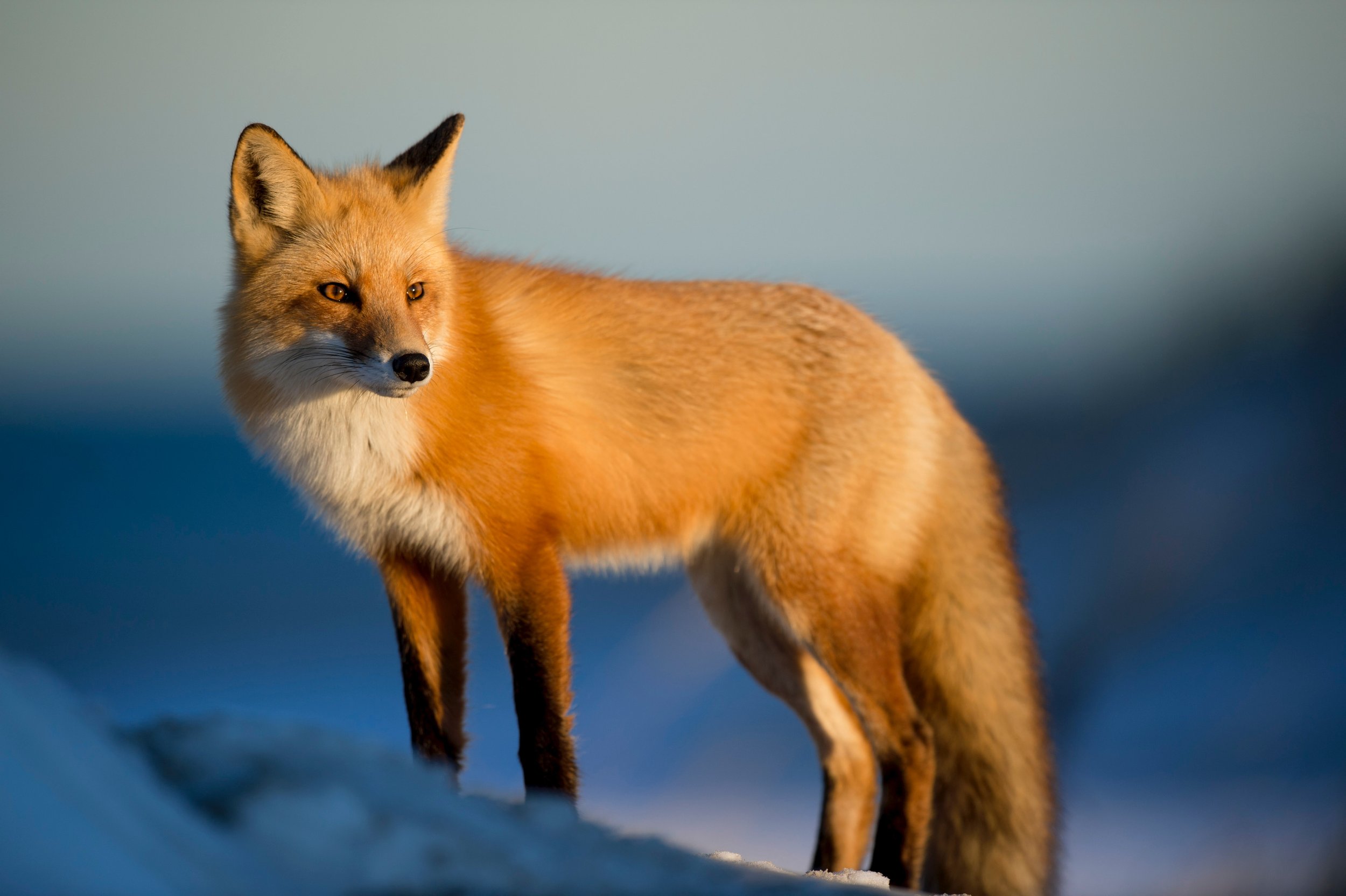
Foxes are small to medium-sized mammals that belong to the family Canidae, which also includes wolves, coyotes, and domestic dogs. They are found in various regions around the world and have become well-known for their cunning nature, adaptability, and distinctive appearance. With their bushy tails, pointed ears, and narrow snouts, foxes are easily recognizable, especially the red fox (Vulpes vulpes), which is the most common and widespread species. However, there are many other species of foxes, including the Arctic fox, Fennec fox, and gray fox, each with its own unique traits and adaptations.
One of the key characteristics of foxes is their adaptability. Foxes can thrive in a wide range of environments, from forests and grasslands to deserts and urban areas. This adaptability has allowed them to survive in many different habitats, making them one of the most widespread carnivorous mammals in the world. In urban areas, foxes have become adept at scavenging for food, often rummaging through garbage and taking advantage of human settlements for shelter and sustenance. Their ability to thrive in these diverse environments is a testament to their intelligence and resourcefulness.

Foxes are omnivorous animals, meaning they eat both plant and animal matter. Their diet typically includes small mammals like rabbits, rodents, and birds, as well as fruits, vegetables, and insects. This varied diet allows them to survive in different ecosystems, where food availability may fluctuate. Foxes are known for their hunting prowess, often using their sharp senses of hearing and smell to locate prey. They can even detect small animals moving beneath the snow or underground, which is especially important for species like the Arctic fox that live in cold, snowy environments.
Socially, foxes tend to be solitary animals, though they may live in small family groups. Unlike wolves, which live in large packs, foxes typically hunt and live alone, only coming together during mating season or when raising their young. A mother fox, or vixen, will give birth to a litter of kits, usually between four and six, in a den. These dens can be burrows dug into the ground or natural shelters like hollow logs or caves. The vixen is responsible for raising the kits, teaching them to hunt, and protecting them from predators until they are old enough to fend for themselves.
Foxes have long been a part of human culture and folklore. In many cultures, foxes are depicted as clever, cunning, and sometimes deceitful creatures. The phrase “sly as a fox” reflects this perception, as foxes are often seen outsmarting their prey or evading predators with their agility and intelligence. In literature and mythology, foxes are frequently portrayed as tricksters, using their wit to achieve their goals. Despite these associations, foxes are generally not dangerous to humans and prefer to avoid contact with people whenever possible.
One of the most fascinating fox species is the Arctic fox (Vulpes lagopus), which lives in some of the harshest environments on Earth. These foxes have adapted to survive in the frigid temperatures of the Arctic tundra, where food is scarce, and conditions are extreme. The Arctic fox’s thick, white fur provides insulation against the cold and helps it blend into its snowy surroundings, making it an effective hunter. During the winter, when food is scarce, Arctic foxes may follow polar bears and scavenge the remains of their kills. They also have a unique ability to store fat during the summer months, which helps them survive long periods of food scarcity in the winter.
Another notable species is the Fennec fox (Vulpes zerda), native to the deserts of North Africa. The Fennec fox is the smallest fox species, but it is known for its enormous ears, which help it dissipate heat and hear prey moving underground. These foxes are well adapted to their hot, arid environment, with a diet that includes insects, rodents, and plants. Their large ears also make them excellent hunters, allowing them to hear the faintest sounds of prey moving beneath the sand.

Foxes also play an important role in ecosystems as both predators and prey. By controlling populations of small mammals and insects, they help maintain a balance in the food chain. At the same time, foxes are prey for larger animals such as wolves, eagles, and humans, who may hunt them for their fur or because they are seen as pests. Despite being hunted, fox populations have remained relatively stable, thanks to their adaptability and ability to thrive in a variety of environments.
In recent years, foxes have also gained popularity as exotic pets, though this practice is controversial. Some people are drawn to the idea of having a fox as a pet due to their playful and intelligent nature. However, foxes are wild animals and have specific needs that are difficult to meet in a domestic setting. They require a lot of space, mental stimulation, and a proper diet to stay healthy. Additionally, their natural behaviors, such as digging and marking territory, can make them challenging to care for in a home environment. For these reasons, many experts advise against keeping foxes as pets.
In conclusion, foxes are fascinating animals known for their intelligence, adaptability, and distinct physical traits. They have managed to thrive in a wide range of environments, from the frozen Arctic tundra to the scorching deserts of Africa. Foxes play an important role in maintaining the balance of ecosystems and have become a symbol of cunning and cleverness in human culture. While they are often admired for their beauty and intelligence, it is important to remember that foxes are wild animals, and their role in the natural world is crucial for the health of the environments they inhabit. Whether we encounter them in the wild, in folklore, or in urban settings, foxes continue to captivate our imagination and remind us of the incredible diversity of life on Earth.